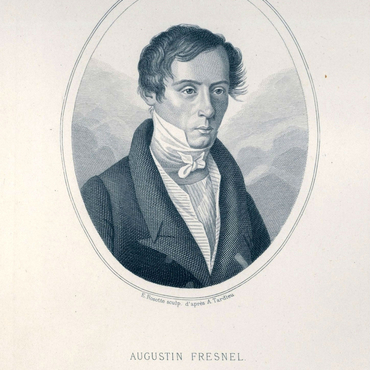
- Home
- Fresnel’s laboratory
- Cordouan, testing ground for Augustin Fresnel
- Augustin Fresnel and the « celestial » lighthouses
Fresnel owed his role in the history of French coastal lighting to a powerful scholarly milieu that, in the early nineteenth century, controlled the county's historic institutions – the Academy of Sciences and the Paris Observatory – as well as its more contemporary ones, such as the Ecole Polytechnique (1794), the successor to the Ancien Régime's engineering schools. When Arago brought him to Paris, Augustin Fresnel was not the brilliant lighthouse engineer who was celebrated in every popular scientific publication of the nineteenth century. Rather, he was a young engineer, a graduate of Ponts et Chaussées, who was languishing in the region of France where his career had taken him: Brittany. Science was his calling, and he had been devoted to it since his admission to the Ecole Polytechnique in 1804. In 1815, he published a paper on diffraction, which was the foundation of wave theory of light. He was summoned to Paris by Arago in 1819 to oversee experiments in lighthouse lighting. When he arrived at the Commission, Fresnel proposed the use of stepped lenses in order to produce parallel rays of light that were more powerful and more economical than those given off by reflectors, since a single light source could be used to light the horizon. In his Mémoire sur un nouveau système d’éclairage des phares (1822) Fresnel wrote that his idea was not exactly groundbreaking, since it was merely the inverse of the principle of the burning glass, which was well known to eighteenth-century scholars. The main problem that Fresnel faced was not designing his lens system, but rather constructing it and convincing both experts and sailors of its usefulness.




